Teenage Mutant Ninja Turtles: Shredder’s Revenge is a retro arcade beat ‘em up that evokes the most popular and successful videogames from the franchise’s early 1990s heyday. In typical genre form, the story is scant. Shredder and his Foot Clan have returned to menace New York City once again, this time with a sinister plan for the Statue of Liberty—the exact same plan from Turtles in Time, which Shredder’s Revenge takes most of its cues from. I choose to play as Leonardo, Donatello, Raphael, Michelangelo, Master Splinter, or April O’Neil, who emerge from their sewer hideout to once again foil Shredder’s latest scheme.
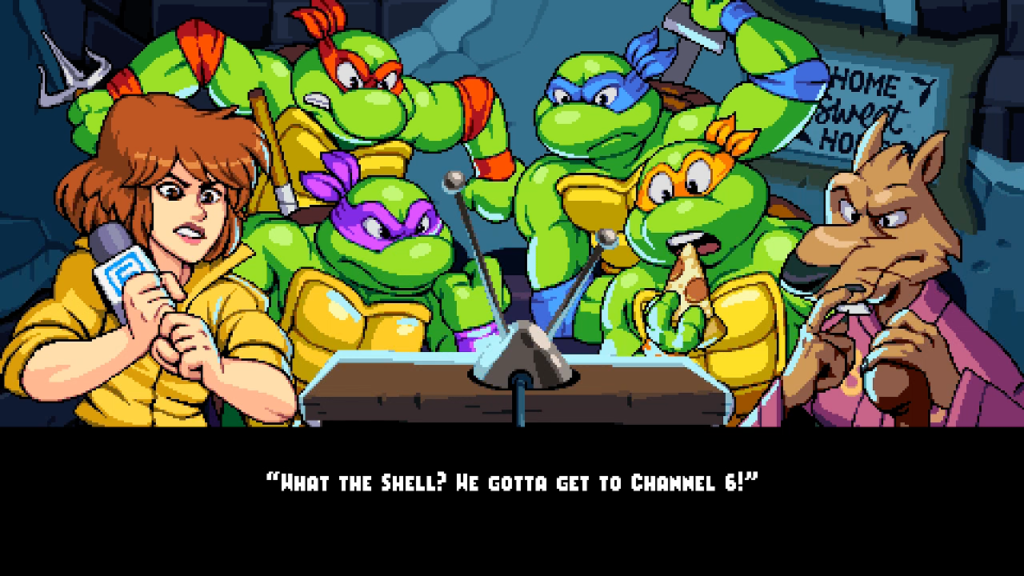
Playing Shredder’s Revenge is like injecting pure concentrated nostalgia directly into my brain’s pleasure centers. Ignoring the last twenty-five years of Teenage Mutant Ninja Turtle spinoffs and reboots, it draws heavily from the visual style and characterizations of the 1987 animated series that transformed the Turtles from cult indie comic book heroes into pop culture juggernauts.
This notalgia does not feel like a cynical ploy to extract money from my checking account, as it easily could. Instead, Shredder’s Revenge feels like it’s made with genuine love for the source material. Considerable skill and talent is dedicated to creating the kind of videogame that rode the animated series’ coattails into superstardom. It aims right for the happy childhood memories of many Millennials, plugging quarters into a ravenous arcade cabinet or sitting way too close to a staticky CRT television, mashing buttons and wiggling joysticks to defeat the Foot Clan one more time. It hits a bullseye.
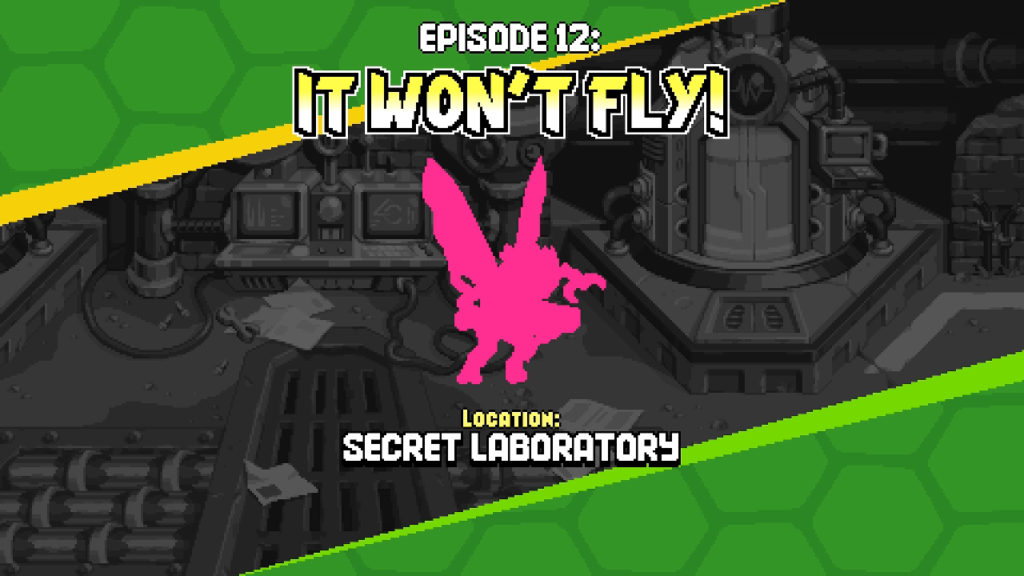
Playing Shredder’s Revenge immediately feels familiar, faithfully replicating the visual language of Turtles in Time. Each level is introduced by a title card with the boss captured in silhouette, exciting fans of which villain they will face at the level’s end and enticing newcomers to battle through the level and find out. Aside from iconic villains like Baxter Stockman, Bebop and Rocksteady, and the Rat King, the Turtles also encounter less-remembered foes like Captain Zorax, Chrome Dome, and Tempestra. Levels are pockmarked with open manholes and other inconvenient pits, and guiding the player character on top of one will cause them to drop into darkness accompanied by a speech bubble chiding my carelessness.
Surfing levels were an inexplicable fad in the Turtles’ videogame era, and Shredder’s Revenge dutifully brings them back as well. That New York City is an ill-fitting setting for surfing adventures is barely an obstacle. Instead, the Turtles ride rocket-powered skateboards across highways and bridges, leaping over construction equipment and holes in the road while battling Foot Soldiers on rocket bikes. Later, they ride hoverboards across the city skyline. It’s the 1990s again, and little things like practicality and technological reality won’t stop the heroes from surfing to victory.
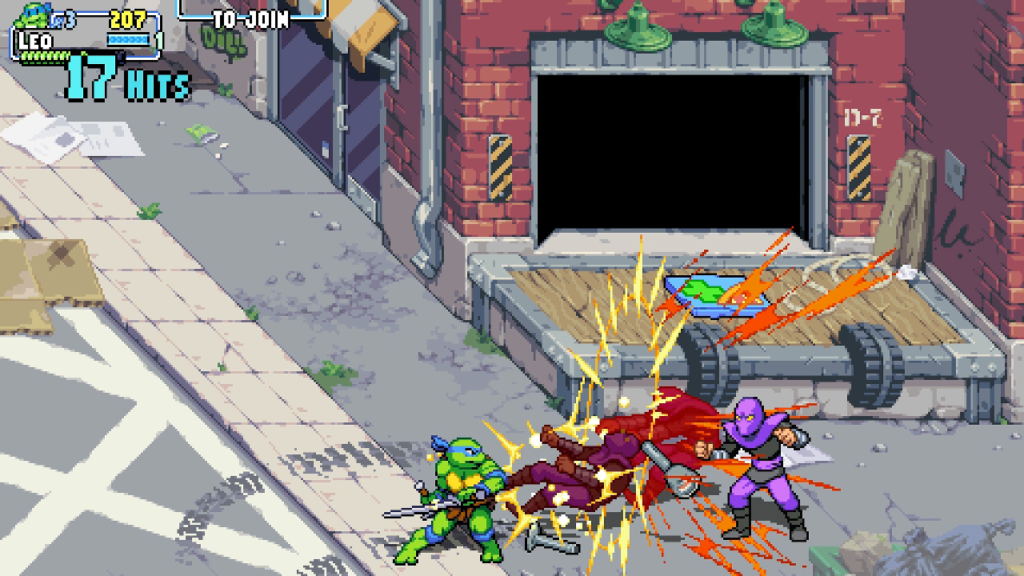
Shredder’s Revenge takes full advantage of more sophisticated available hardware to create a beautiful pixel art adaptation of the animated series’ visual style. This is best represented by the animations. Instead of broadly reusing the same animations between each Turtle, each one stands out in unique ways.
Each turtle’s personality is immediately captured in their running animation. Leonardo runs forward with straight-backed determination, his swords ready at his side, showing his calm and preparedness. Donatello has a similar gait, but holds his staff safely behind him, the kind of weapon discipline I expect from the smartest brother. Raphael runs hunched forward with an angry grimace on his face, his sai pointed downward, showing his motivation drawn from inner frustration and rage (a characterization that, admittedly, is drawn more from the live-action films than the animated series). Michelangelo pumps his arms and lifts his legs high while leaning back as he runs, suggesting he is the least disciplined of the four.
Through such detailed and thoughtful use of animation, each character’s personalities are expressed through a medium and a genre that often suppresses nuance.
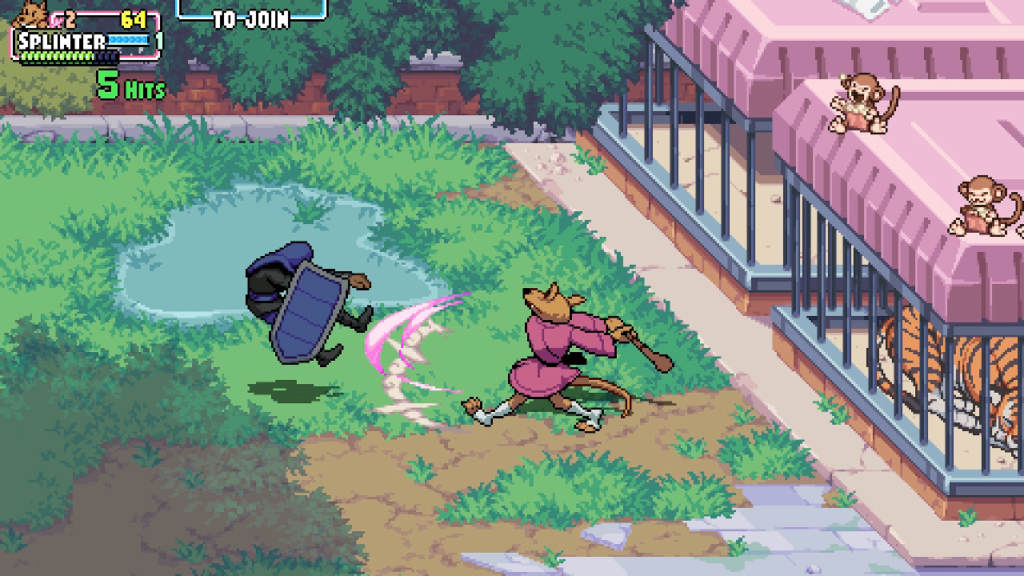
The best way Shredder’s Revenge builds upon the videogames it is inspired by is the use of April O’Neil. The character doesn’t have a great track record in the Turtles’ previous arcade beat ‘em up outings. In The Arcade Game and The Manhattan Project, April’s kidnapping serves as one of the central conflicts between the Turtles and the Foot Clan. In Turtles in Time, April gets a reprieve from kidnapping, but spends the events observing from the sidelines.
In Shredder’s Revenge, April is promoted to fully-playable character. Dressed in her iconic banana yellow jumpsuit, she performs martial arts just as capably as the Turtles and Master Splinter. In an inspired twist, she also mixes in equipment from her news reporting job as improvised weapons. The heavy, large, early-90s electronics make a microphone into an effective club and a camera attached to its tripod into a devastating hammer. Lamentably, April is slotted into the “fastest, but weakest” archetype that so many other playable women in arcade beat ‘em ups are relegated to, but these statistics ultimately prove so negligible to the overall experience that it’s easy to overlook them.
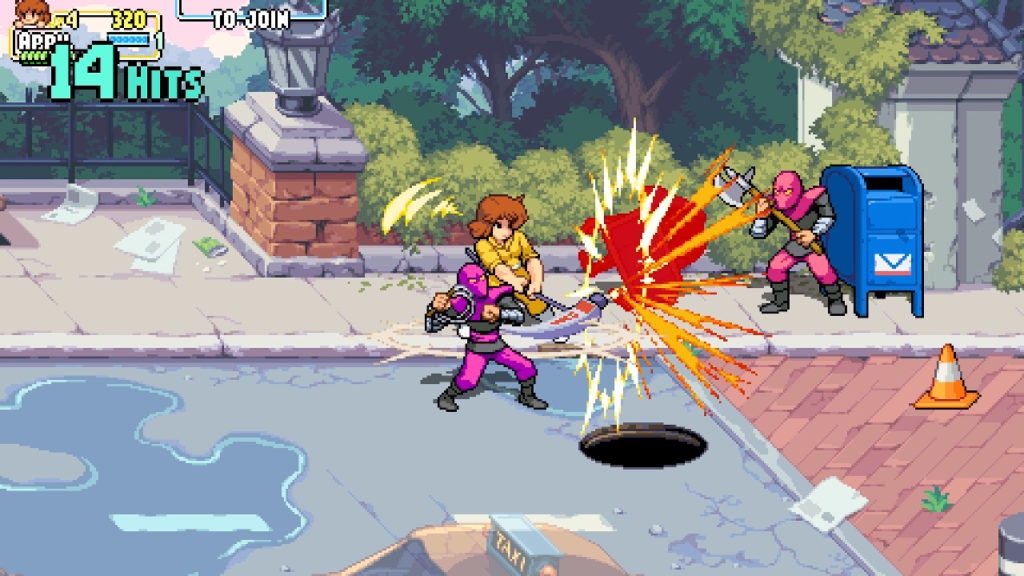
While the arcade design feels genuine to the classic titles from thirty years ago, it has not been allowed to stagnate. Contemporary niceties established by other retro arcade titles are brought over to Shredder’s Revenge. There is an Arcade mode that faithfully recreates a classic experience, challenging me to beat every level in sequence in one sitting with one set of lives, but the real emphasis is the Story mode. In it, I tackle each level individually, getting a refreshed health bar and extra lives with every attempt. This makes the experience much less difficult to get through; it’s less of a mouthful for those who play videogames in shorter spurts, and less of a challenge for those stymied by later levels because they used all their extra lives getting through the earlier ones.
Each level also has a set of special goals to achieve, ranging from finding NPCs and collectibles hidden behind breakable objects, to beating the level without taking a hit, to executing a specific attack a certain number of times. Completing these goals awards the player character points which increase their Power Levels. Each Power Level confers bonuses like an increased extra life cap, a longer hit point meter, and powerful new attacks. Each player character has an individual Power Level meter to cap out, and though completing them all is a bit of a grind, it’s nice that Shredder’s Revenge gives me at least some reason to revisit the Story mode after I’ve seen the credits and finished every challenge.
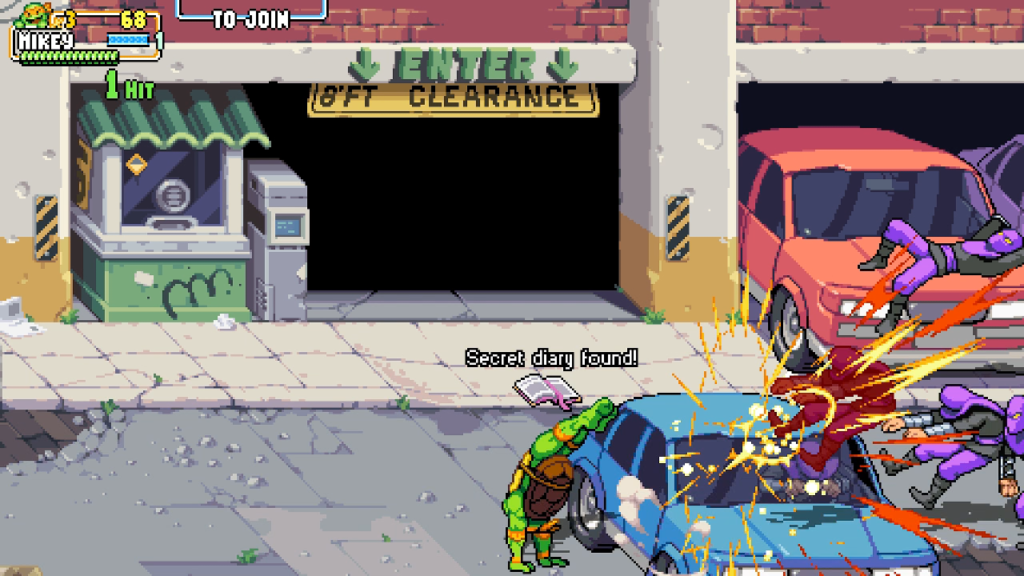
The biggest practical update in Shredder’s Revenge is a dedicated roll button to complement the attack and jump buttons. It’s a small addition, but an impactful one. The ability to roll quickly away from danger makes the player characters feel more nimble and more powerful.
In response to this improved mobility, enemies come in many more varieties, with most requiring specialized strategies to overcome. Green Foot Soldiers rush at the player character with upheld spears, so I must roll forward to dodge past their weapons. Light Purple Foot Soldiers are equipped with shields which I must charge a basic attack to penetrate. White Foot Soldiers can parry attacks with their swords, punishing aggressive button mashing and requiring patience and precision to defeat.
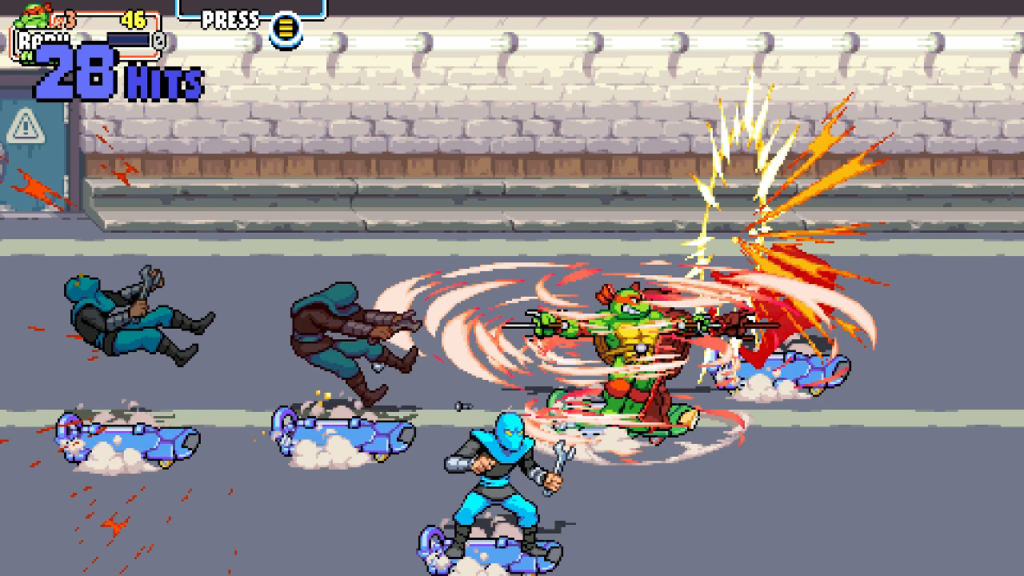
What truly makes the player characters feel powerful is the new Ninja Power mechanics. In previous TMNT arcade beat ‘em ups, I can execute powerful special attacks that defeat most standard enemies in a single hit and devastate bosses. These attacks come at a price: a portion of the player character’s health bar. In console versions, this feels like an arbitrary punishment for using the most powerful tools. It makes more sense in the arcades, where that life can be regained by inserting a quarter. It’s an early pay-to-win mechanic.
Shredder’s Revenge dispenses with this tradeoff. Instead, I can build the player character’s Ninja Power meter by chaining together attacks without getting hit. The meter fills quickly, practically begging me to use my special abilities regularly, and with three different attacks available for each player character, there’s a lot of variety and situational applicability to explore.
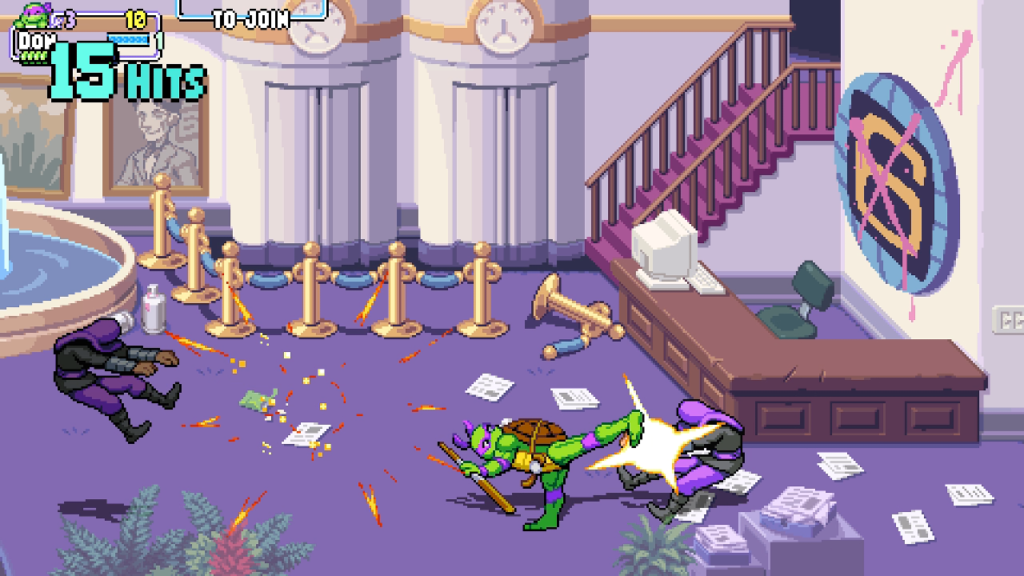
The wider array of attacks, and particularly the more accessible Ninja Powers, make Shredder’s Revenge much easier than its predecessors. I sat down to play through the Arcade mode with April O’Neil, expecting to hit a game over after a few levels. To my mild astonishment, thoughtful and strategic application of the many attacks saw me through the entire game without much difficulty.
If anything, arcade purists and veterans may find Shredder’s Revenge too easy. They may also find it too long; at sixteen levels, it’s more than twice as long as the arcade beat ‘em ups that inspire it. I don’t mind. Shredder’s Revenge is too much fun to be frustrated with its gentle difficulty and stretched length.
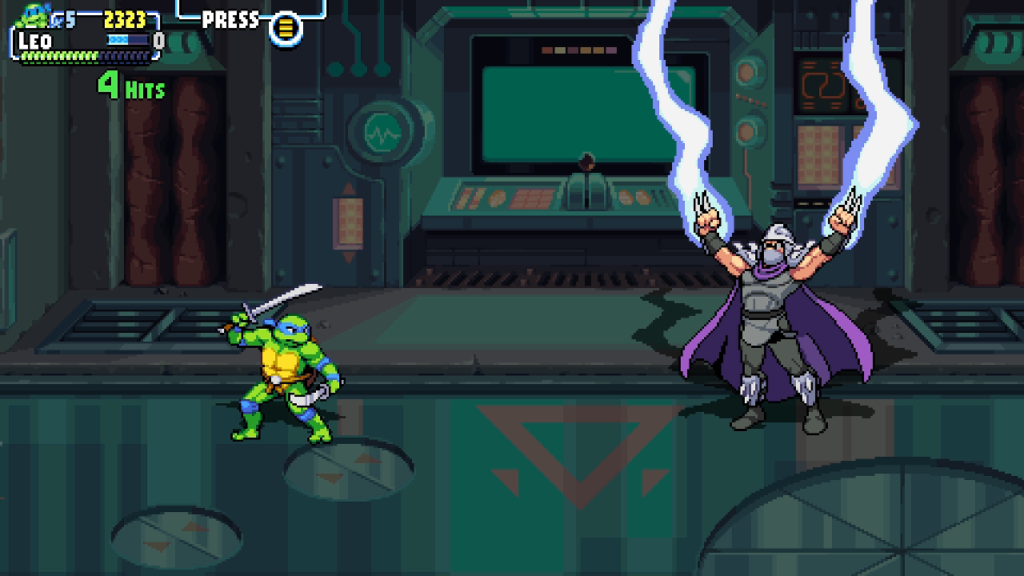
Teenage Mutant Ninja Turtles: Shredder’s Revenge is a worthy followup to Turtles in Time and one of the best arcade beat ‘em ups released since the retro revival of the early 2010s. I find it difficult to express anything but relentless positivity towards it. I’d like to think this is because it’s just that good—which it is—but I also embrace the foundational memories which make me feel this way. Playing Shredder’s Revenge is like being drunk with nostalgia. That it’s beautiful and fun and well designed is beside the point. Arcade beat ‘em up fans will have a good time, but players who were children in the TMNT heyday will get the most out of this experience.